From the time of the first explorers of India and Asian countries, and up to the present day, when digitalization has entangled all spheres of a modern person' life, Eastern culture continues to excite the minds and hearts of people around the world with its mysticism and mysteries. Most often, people look for answers to eternal questions in it, support in difficult situations, protection from evil and indications of the best path for later life. And of course, such an ancient culture throughout its history is invariably reflected in the same ancient art of tattooing.
Today we want to introduce to you a tattoo artist who not only works in this theme, but makes it as close as possible to its original form of tattooing, without the use of electric tattoo machines.
This technique is called handpoke, and today we will talk about it, about magic, oriental culture, symbolism and much more. And our interlocutor will be a well-known expert in the field of headpoke tattoos and Buddhist symbolism - Sofia Streltsova.
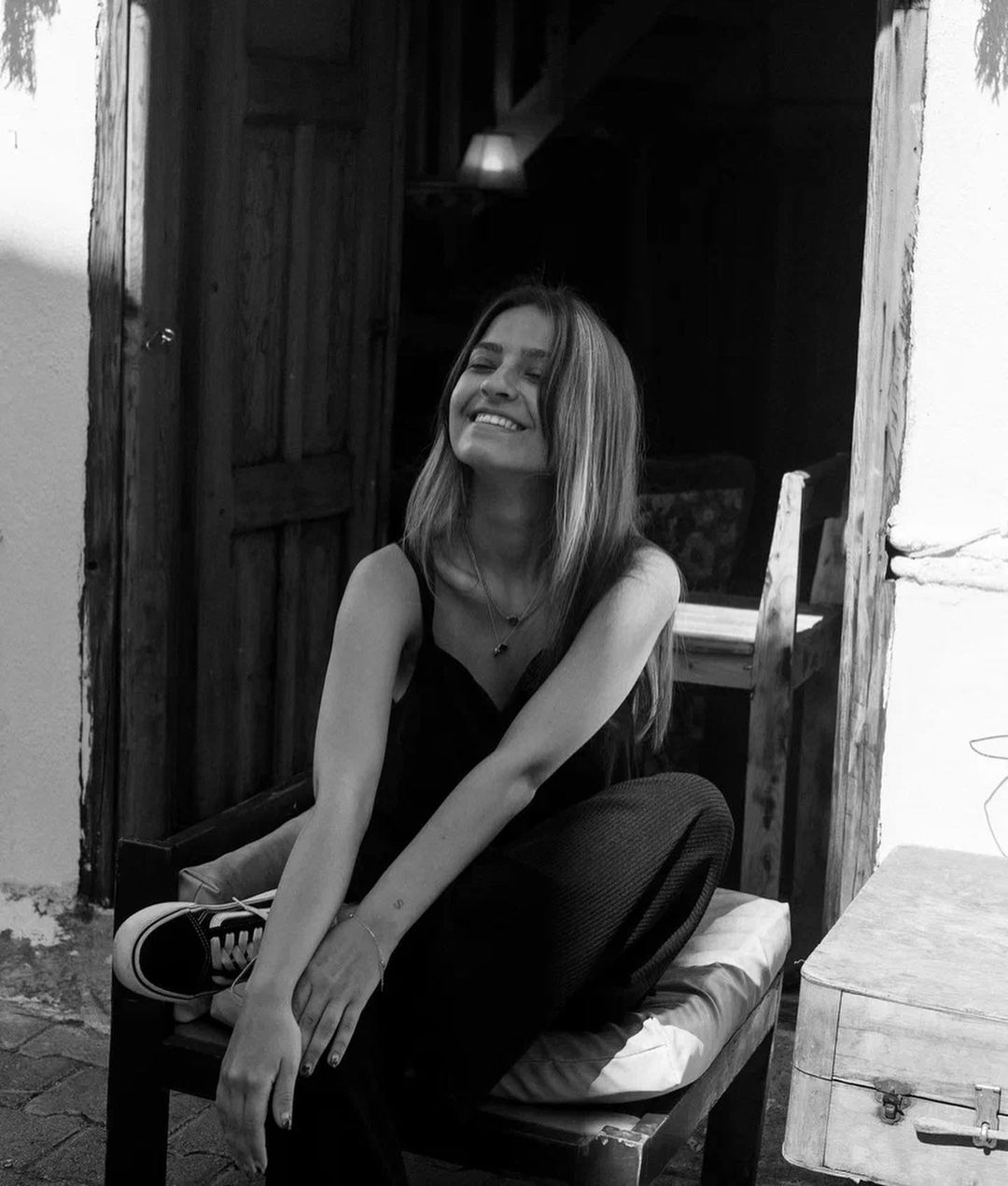
Sofia, tell us a little about yourself for those who for some reason are not familiar with your work.
- I am 24 years old. A year ago, I graduated as an architect-urban planner, worked in a design office, engaged in documentation for current design projects and visualization of interiors. Even in the 3rd year of university, I began to think that I would like to try myself in something else related to creativity. Because I lacked creative implementation in architecture.
How did you get into tattooing?
- I've always liked tattoos and wanted to get a tattoo since I was about 15. I followed many tattoo artists from St. Petersburg and Moscow on social media, but especially liked the work of one tattooist. And my friends gave me a certificate for a session to him. Already at the session, I found out that he also has individual tattoo training.
I thought for a long time and finally decided to take this course. This was approximately 3 years ago. To be honest, I had no plan to become a tattoo artist, I went to the course for myself, I thought it would be my hobby. But the hobby has grown into something more. In this profession, I have found all the necessary components for myself: creative realization, reflection of myself in my works, the ability to combine it with other creative ideas.

Handpoke is a very rare technique, and in combination with Indian culture, Buddhism, mantras, it all turns into some kind of ritual. Tell us about your passion for Buddhism and how it turned into tattooing?
- I started to get involved in Buddhism much earlier than tattoos. When I was 6-7 years old, my dad took me to an Indian shop. His friends worked there. While he was chatting with them, I walked around and looked at figurines, pebbles, jewelry. There were so many details that every time we went there, I found something new and interesting. Later, I bought my first book on Buddhism and began to study this culture in more detail.
And it turned into tattooing when I thought about getting a tattoo for myself. I knew for sure that it would be a Buddhist symbol and tattooed a Buddhist umbrella on my thigh - this is one of the good symbols in Buddhism. It saves from the defilement of the mind, like an ordinary umbrella from the rain.
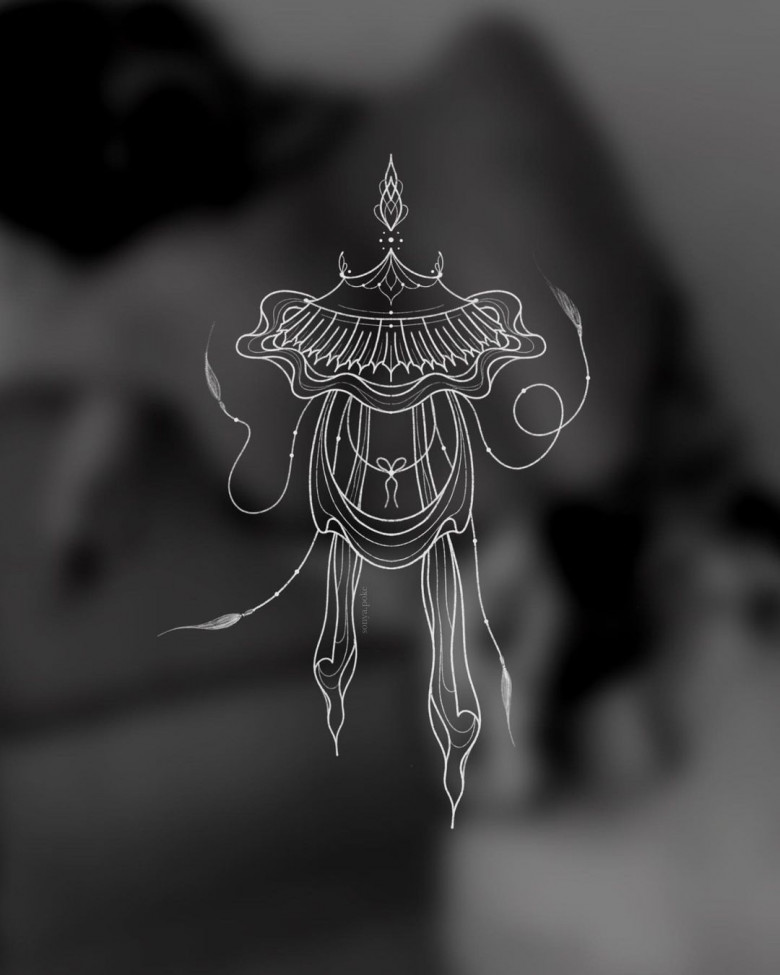
Therefore, when I went to the individual handpoke training, I knew for sure that I would develop in this direction. Actually, my first sketches were - Tibetan infinity knots, vajra, goldfishes.
Was it difficult to master the handpoke technique? Did you have teachers or maybe some difficulties along the way?
- It was not so much difficult as scary. When you realize that you leave a mark on a person’s skin forever, you are afraid to make a mistake. Such feelings overcame me while I was studying and at the first training on friends and acquaintances.
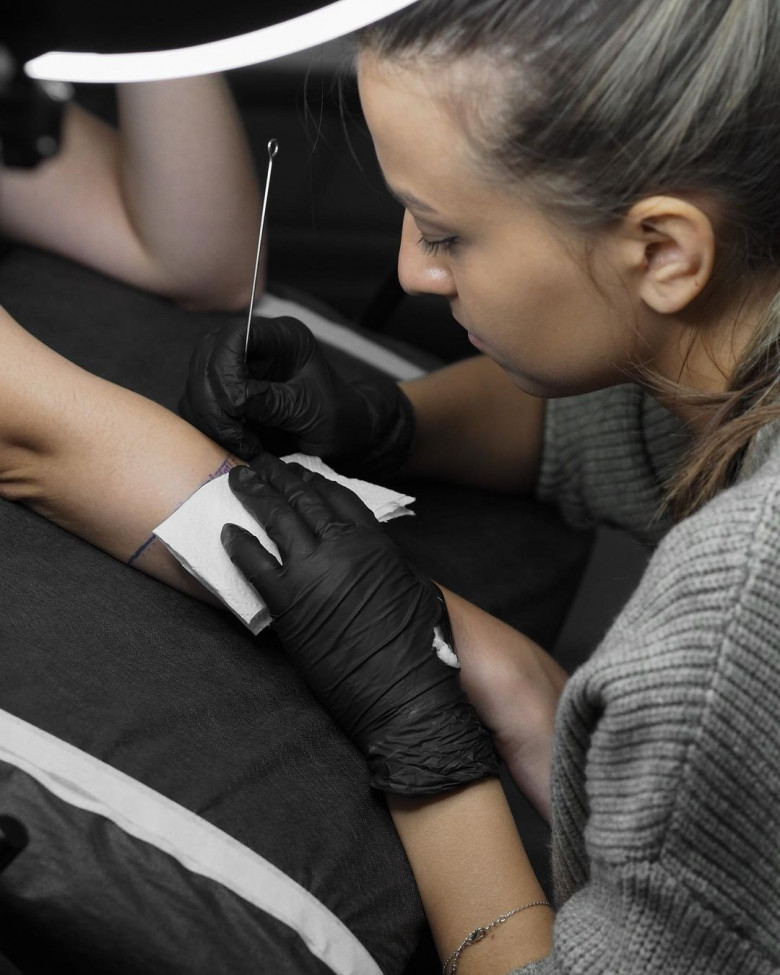
You teach the handpoke in a fairly short time. How long does it take to master this technique? And do you need any additional skills for this?
- I conduct individual training for people who already have drawing skills. Unfortunately, without artistic skills, I do not take for training, because this is a base that is simply impossible to master in a short time. For example, I have 9 years of art school, 2 years of drawing and composition courses at the university and 5 years of architectural education. That is a total of 16 years. But many people want to learn how to tattoo without having any artistic experience.
You can master the technique, understand how to make a dot and draw a line, in 3 days. This is how long individual training lasts. But to tattoo a straight line, to feel the architecture of the body, to draw a sketch in such a way as to emphasize the lines of the body, to successfully place the image on the body - this requires artistic skills. Of course, it is not necessary to have 16 years of art education, but you must at least feel the composition and be able to firmly hold the pencil in your hand. Therefore, I select candidates for training only by portfolio.
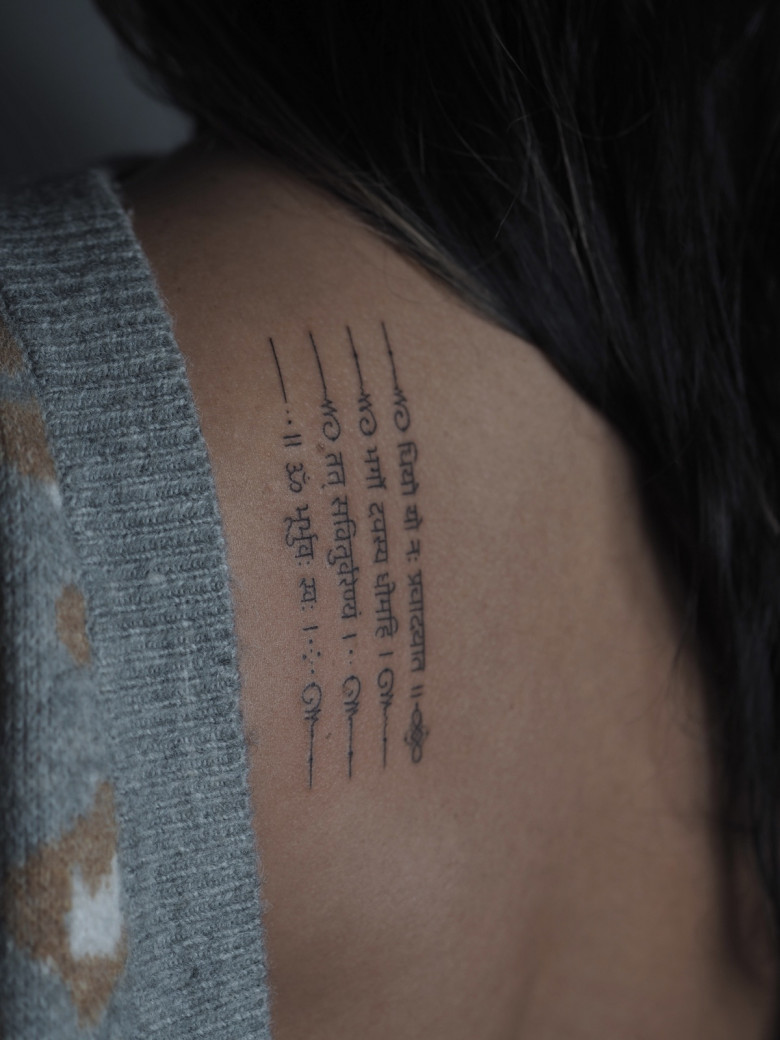
Tell us about the features of this tattoo technique.
- As for the handpoke, I can definitely say that it injures the skin less than machine tattooing. The machine makes more than 60 beats per second, I do 2-3 per second. That is why handpoke tattoos heal faster. In the handpoke technique, it is easier to make tattoos in hard-to-reach places: on ears and fingers. The needle is easier to control in the process than the machine. The machine is easier to injure the skin, because in these places it is very thin.
For me, a tattoo made by hand has more life than a machine-made one. It becomes somehow special precisely because it is made by hand.
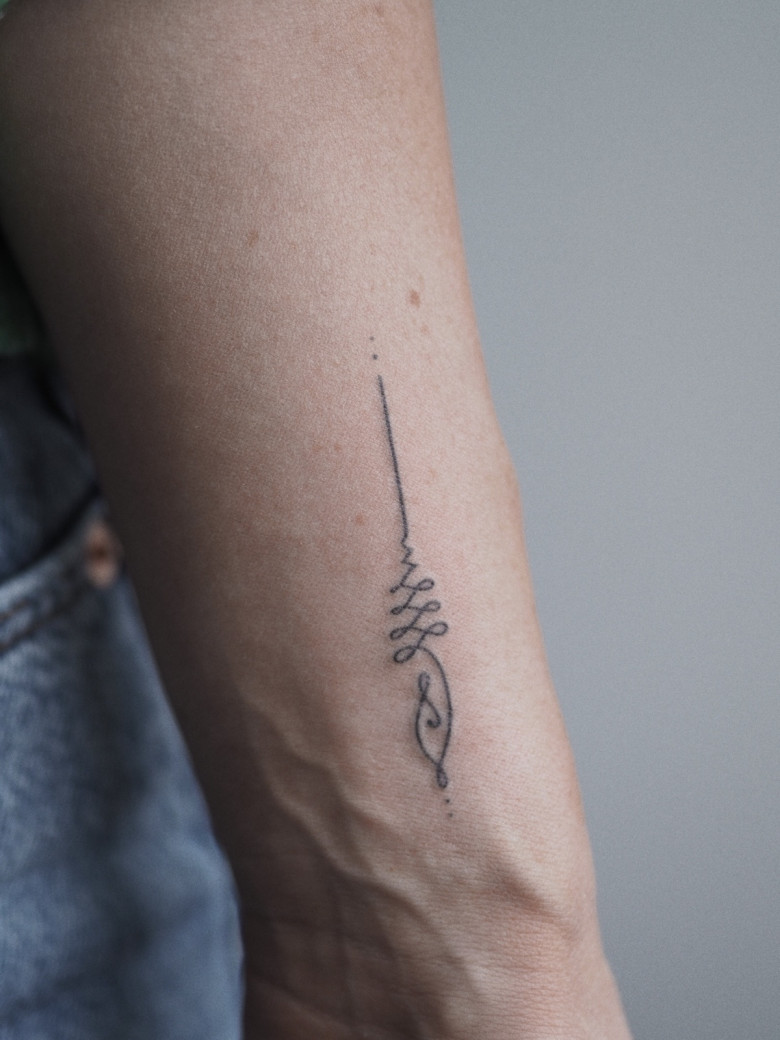
You often use Sanskrit inscriptions in your tattoos. Tell me where did you study it?
- I studied Sanskrit in private lessons with a teacher. Sanskrit is an ancient language and quite difficult to learn, many words and phrases do not have a direct translation. Although, interestingly, in some ways it is similar to Russian, there are also cases there and the rules for constructing sentences are very similar.
All the main mantras I take from the textbook, they are well known and publicly available. Sometimes clients bring me phrases or words that have been translated to them by their teachers or acquaintances from India. I do not take responsibility for the translation from Sanskrit. I believe it should be done by specialists.
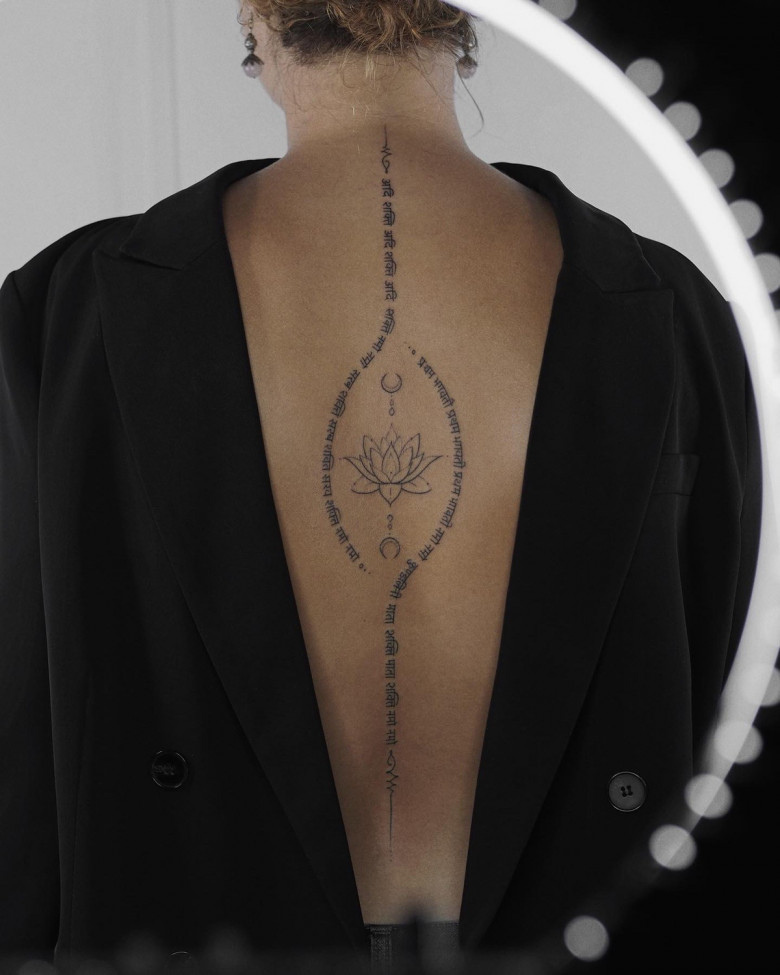
The East has always attracted foreigners with its mysticism. What do you put in your tattoos? And where do you get inspiration?
- Inspiration comes from the human interaction between me and the client. He has ideas and meanings that he wants to put into a future tattoo, and I have a creative implementation of his ideas. This is how the most interesting projects turn out! Together we select symbols that match exactly his idea, and then, usually, clients completely trust me, and I start looking for suitable shapes. I draw inspiration from the same books on Buddhism and books with Tibetan symbols.
What kind of tattoos do you come to most often?
- Most often, they come to me for a project on the back with a mantra along the spine. Now this direction is gaining popularity, due to the high interest in spiritual practices and yoga. In addition, such works look very feminine, emphasize the elegance of the back. And since they also contain such a strong meaning, it is possible to combine visual and meaning components.
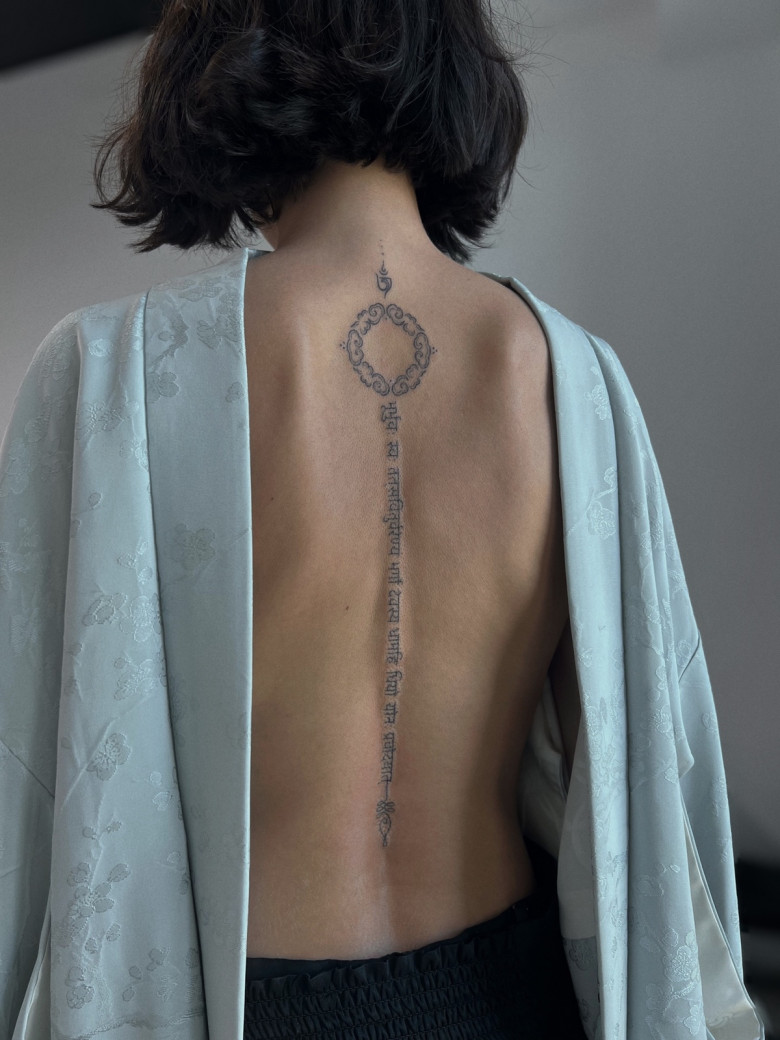
We often ask tattooists about their most unusual projects. And most often it is large and complex work in technical terms. In your case, the following is interesting: have you encountered a mystical confirmation of the power of your tattoos during your practice?
- I have a very interesting story! When I first time went on a working trip to Moscow, a girl signed up for a tattoo on her shoulder. She came up with the idea to depict the phrase "Happiness is inside you" around the shoulder joint. The work was not easy, because the phrase, according to her idea, had to be depicted in a circle, and as we know, our body does not have ideal geometric shapes, and we drew part of the tattoo freehand. We had a wonderful session, we talked a lot and immediately decided that the next time I come, we will do a new project.
But on my next trip, we had to cancel the appointment, because a week after our session, the girl became pregnant! She was so happy, and said that this tattoo did a little miracle! She recently sent me a big thank you message with pictures of a baby lying on her shoulder next to this tattoo. I have never seen anything cuter! To be honest, the first time she told me about the pregnancy, I was so touched!
I like it when a tattoo has meaning for a person, when it is got consciously - as a reminder to yourself of something very important!

Are there many foreigners among your clients?
- If you look at the statistics, now 50% of my audience is foreigners. People came to me for sessions from other cities and from other countries. For people who want something unique, it is not a problem to come from another city or even country.
Do you travel a lot? Where have you already been and where do you want to go in the future?
- I traveled a lot, I have already visited France, Italy, Spain, Portugal, Japan, Austria. The list of countries I have visited is quite large. Then, due to the pandemic, it was not possible to travel for two whole years. Now I want to resume my travels and go to countries where I have not been yet.
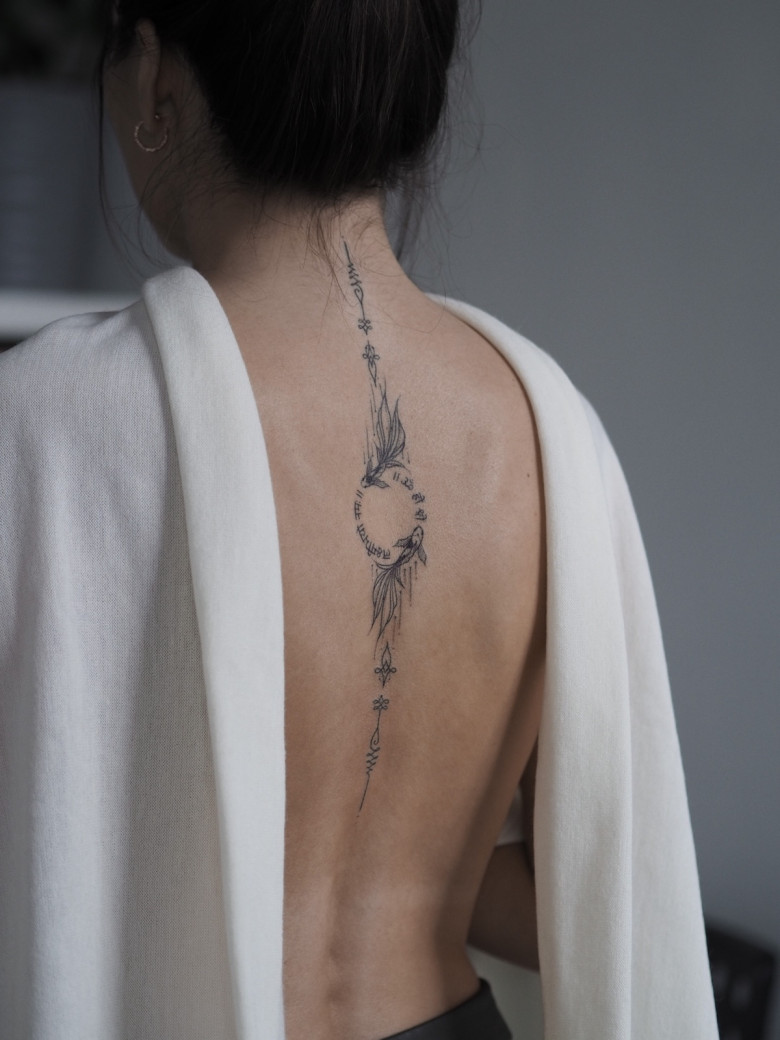
What are your plans for the near future?
- I have a plan to grow as an international tattoo artist. I have a lot of opportunities for this that I didn’t have before. And I thought: when, if not now?
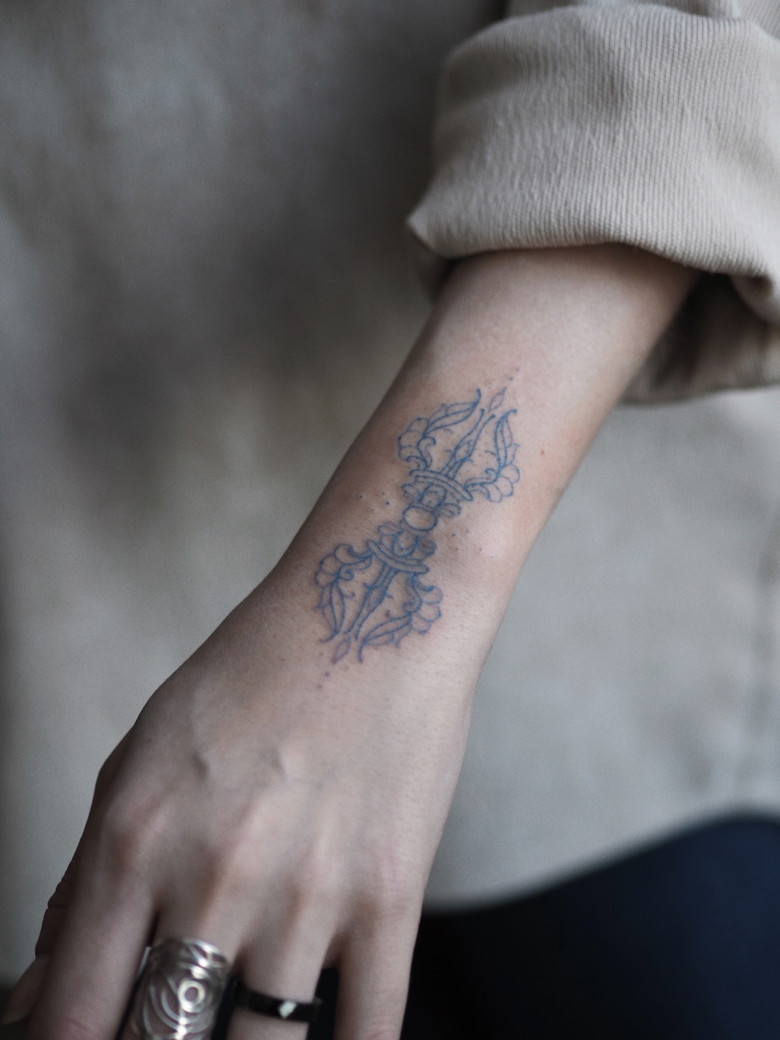
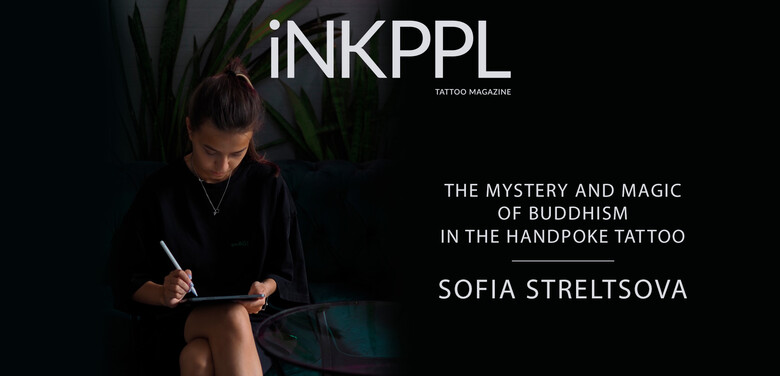

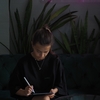
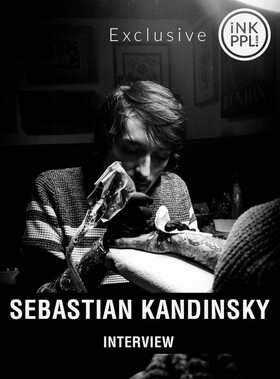
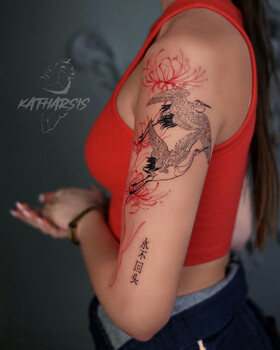
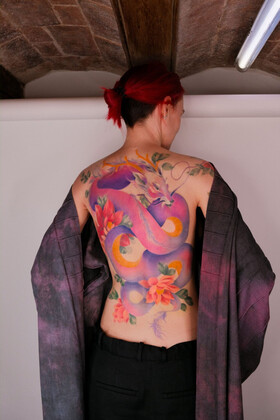
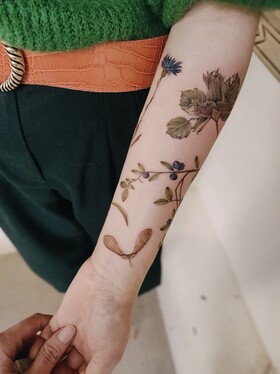
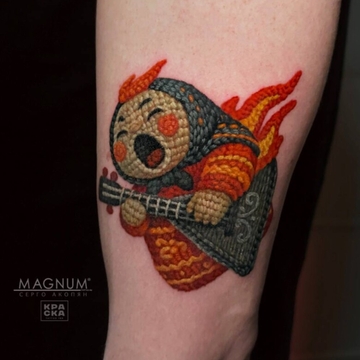
Comments (0)